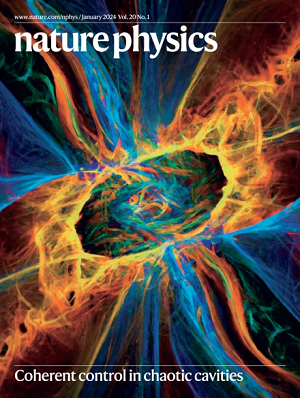所有真实的投影测量都可以自我测试
IF 17.6
1区 物理与天体物理
Q1 PHYSICS, MULTIDISCIPLINARY
引用次数: 0
摘要
纠缠量子系统具有比经典方法更强的非局域相关性。这一特性使自检成为可能,自检是量子功能验证的最强形式,它允许经典用户推导出量子态和用于产生一组给定测量统计量的测量。虽然量子态的自测试已广为人知,但测量的自测试,尤其是高维度的自测试,相对来说仍未被探索。在这里,我们证明了每一个真实的投影测量都可以进行自检。我们的方法采用了这样一种理念,即现有的自测试可以扩展到验证更多不可信的测量,这就是所谓的事后自测试。我们正式提出了事后自测的方法,并确定了它的应用条件。利用这一条件,我们构建了所有真实投影测量的自测试。在此基础上,我们开发了一种迭代自测试技术,为从已有的自测试中构建新的自测试提供了清晰的方法论。本文章由计算机程序翻译,如有差异,请以英文原文为准。


All real projective measurements can be self-tested
Entangled quantum systems feature non-local correlations that are stronger than could be realized classically. This property makes it possible to perform self-testing, the strongest form of quantum functionality verification, which allows a classical user to deduce the quantum state and measurements used to produce a given set of measurement statistics. While self-testing of quantum states is well understood, self-testing of measurements, especially in high dimensions, remains relatively unexplored. Here we prove that every real projective measurement can be self-tested. Our approach employs the idea that existing self-tests can be extended to verify additional untrusted measurements, known as post-hoc self-testing. We formalize the method of post-hoc self-testing and establish the condition under which it can be applied. Using this condition, we construct self-tests for all real projective measurements. We build on this result to develop an iterative self-testing technique that provides a clear methodology for constructing new self-tests from pre-existing ones. Quantum correlations are strong enough that classical users can verify that a device produces quantum entangled states using only the outcomes of local measurements. This self-testing approach has now been extended to verifying quantum measurements.
求助全文
通过发布文献求助,成功后即可免费获取论文全文。
去求助
来源期刊

Nature Physics
物理-物理:综合
CiteScore
30.40
自引率
2.00%
发文量
349
审稿时长
4-8 weeks
期刊介绍:
Nature Physics is dedicated to publishing top-tier original research in physics with a fair and rigorous review process. It provides high visibility and access to a broad readership, maintaining high standards in copy editing and production, ensuring rapid publication, and maintaining independence from academic societies and other vested interests.
The journal presents two main research paper formats: Letters and Articles. Alongside primary research, Nature Physics serves as a central source for valuable information within the physics community through Review Articles, News & Views, Research Highlights covering crucial developments across the physics literature, Commentaries, Book Reviews, and Correspondence.
 求助内容:
求助内容: 应助结果提醒方式:
应助结果提醒方式:


